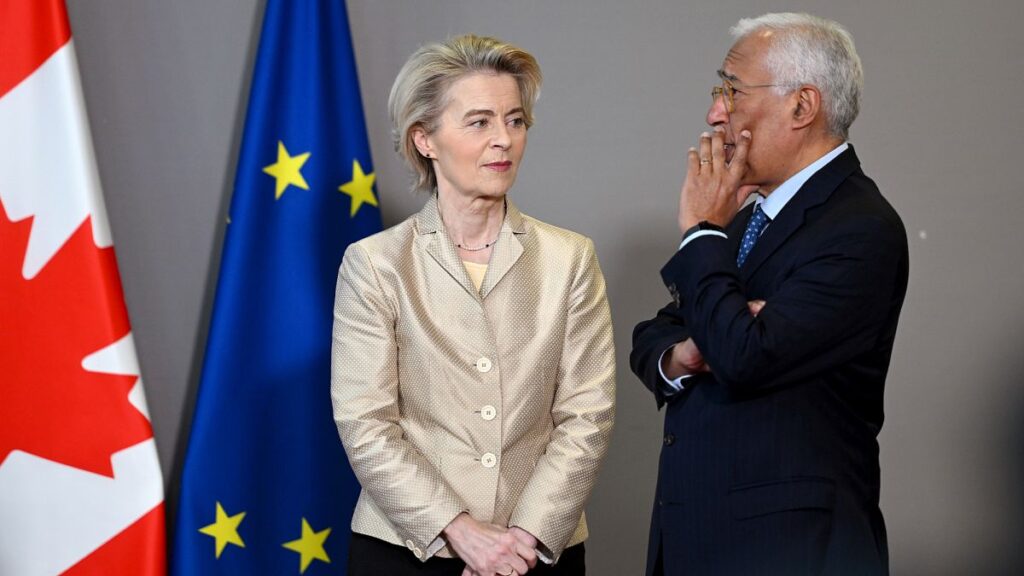He has never been to Canada but he loves the country. “To me, it’s a dream of freedom and a better America,” Joachim Streit, a member of the liberal Renew group, told Euronews. “A dream of emigrants which many others have lived out.”
What first seemed a political prank has become a semi-serious debate, as US President Donald Trump has taunted and provoked Canadians with talk of converting Canada into the 51st state.
When, in mid-March, Canada’s new prime minister Mark Carney broke with tradition by visiting Europe rather than Washington for his first foreign trip as his country’s leader, Carney told his hosts in Paris that Canada is “the most European of non-European countries”, alluding to his country’s French and British roots.
Some in Brussels felt encouraged to push for more, and Joachim Streit was among them.
Emboldened by the publication in late February of polls suggesting that a stunning 46% of Canadians would support Canada joining the EU, Streit took the issue to the European Commission again.
Brussels had already felt compelled to react to intense chatter on social media advocating EU membership following ongoing hostile rhetoric from Trump.
In a March briefing, a Commission spokeswoman pointed to Article 49 of the Treaty of the European Union which stipulates that “any European State… may apply to become a member” – in other words: ONLY European states.
In a parliamentary question to the bloc’s executive body a few days later, Streit underlined the lasting advantages of Canadian membership for the EU.
It would “expand its single market, create sales opportunities, facilitate the exchange of goods and services, and be better able to withstand threats of tariffs and global security risks.”
Would the Commission propose a legal revision of Article 49 to allow Canadian membership, Streit asked. He is still waiting for a response.
The term “European state” could be legally flexible, Streit told Euronews. After all, there is the EU member Cyprus which is technically a west Asian state.
And there are French and Dutch territories in the Caribbean, Spanish and Portuguese islands in the Atlantic and Greenland, an autonomous region in the Kingdom of Denmark – all (currently) part of the European Union.
Greenland and Canada even share a land border between Ellesmere Island and Greenland’s north westernmost tip in winter when solidly frozen sea ice creates a land bridge.
In fact, Canadian military has reportedly turned back Inuit who wandered across the Robeson Channel, the northern part of the Nares Strait, on foot into Canadian territory in the past.
Thus, Streit sees Canada and the EU as existing neighbours and partners and feels that more needs to be done. “Sometimes in history, doors open and then shut again. And sometimes, the doors are open only for a brief moment”, Streit said in a committee hearing in the European Parliament in early April.
In late April, Streit wrote a letter to two EU Commissioners, Roxana Minzatu and Ekaterina Zaharieva, in charge of social rights and research respectively, urging them “to set up a framework of academic and professional exchange” between Canada and the EU.
“This would allow EU officials to get more familiar with the particularities of Canada, and at the same time, it would allow Canadian officials to also learn EU policy-making with the EU institutions”, Streit wrote in the letter seen by Euronews. He calls it a “political Erasmus” framework.
Such an initiative could be a stepping stone to Canada’s EU membership, Streit hopes. If not a full membership, at least a close relationship like with Switzerland or Norway.
“After all, we are people of the same ilk with the same set of values. Where else do we find this?”
Read the full article here

